The Benefits and Applications of Warehouse Racking Systems in Inventory Management
Warehouse racking systems offer an efficient solution for managing and storing goods. Discover the types, benefits, and applications of warehouse racking systems in this article.
1. What is a Warehouse Racking System?
A warehouse racking system is a storage solution designed to organize and optimize space within a warehouse. These systems help arrange goods neatly, making them easier to manage and maximizing storage capacity.
2. The Importance of Warehouse Racking Systems in Inventory Management
Warehouse racking systems play a crucial role in:
Maximizing Space: Storing goods vertically allows you to make the most of your warehouse’s floor space.
Efficient Inventory Management: Easier control and inventory checks, minimizing errors and reducing losses.
Boosting Productivity: Employees can easily access goods, speeding up order processing.
3. Common Types of Warehouse Racking Systems
Medium-Duty Racking
Medium-duty racking is designed to store goods with a medium load capacity, typically ranging from 200 to 500 kg per shelf. Due to its sturdy and flexible structure and reasonable cost, it is widely used in various industries, from warehouses and factories to stores and supermarkets. The size and design of medium-duty racking can be customized according to the customer’s needs while ensuring safety and technical standards.
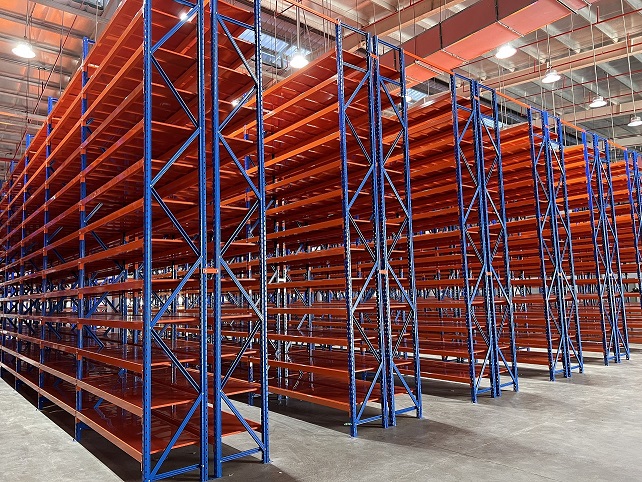
The racks are fixed using bolts and screws of corresponding sizes, making adjustments easy, saving space, and allowing for the storage of a wide range of goods.
Shuttle Racking
Shuttle racking is a semi-automated heavy-duty storage system that uses robots to move goods along rails via a remote control or a computer with Wi-Fi connectivity. This setup eliminates the need for forklifts to enter deep into the racks, reducing transfer time and minimizing the risk of collisions.
Shuttle racking is suitable for high-density storage, especially in cold storage systems, the food and beverage industry, and other sectors with low SKU levels.
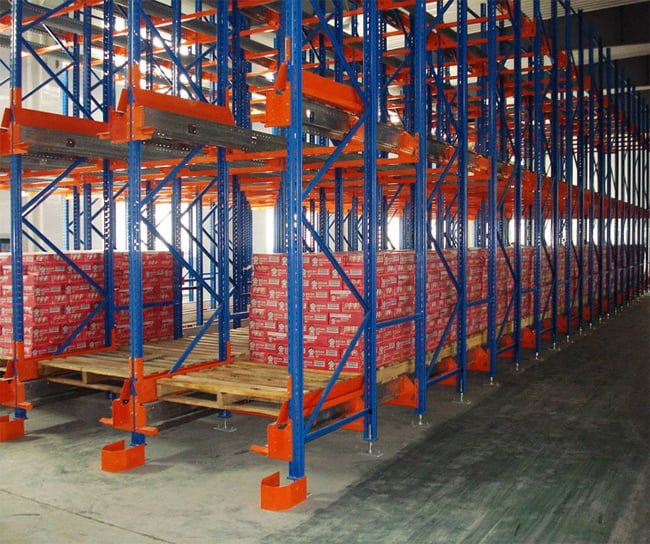
This system helps maximize storage space and simplifies the loading and unloading process.
The system automatically shuttles and stacks pallets with high productivity and efficiency.
No need for forklifts to enter aisles.
The robot’s speed is 1.2 m/s when unloaded and 0.8 m/s when loaded.
Maximum load capacity is 1500kg/pallet.
This industrial racking system is widely used in the food and beverage, cold storage, chemical, automotive, electronics, logistics, and chemical industries, enhancing work efficiency and reducing labor costs.
Mobile Shelving
Mobile shelving is a type of mobile racking system consisting of shelving units mounted on a mobile base that can move along tracks. It optimizes space and allows for efficient, cost-effective storage distribution. The shelves can slide automatically or semi-automatically (manually controlled).
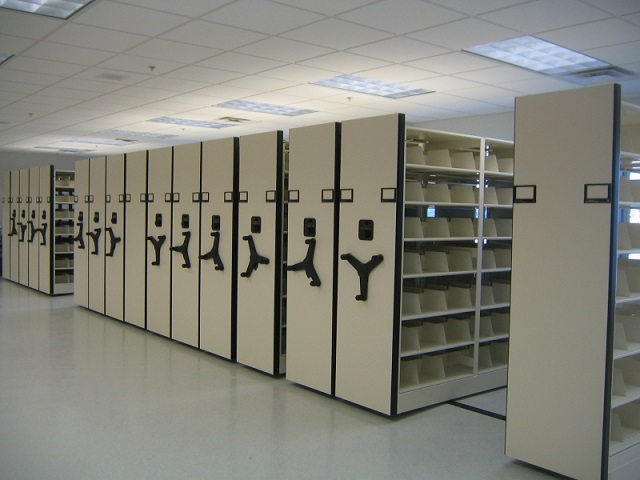
Mobile shelving is used to store high-priority goods that require quick access. Its special design allows 360-degree rotation, making it easy to access and retrieve items without much movement.
ASRS (Automated Storage and Retrieval System)
ASRS is an automated storage and retrieval system designed to store, retrieve, and manage goods quickly and efficiently. This system uses automated equipment to perform storage and retrieval tasks, including robots that move goods within the warehouse to the required locations.
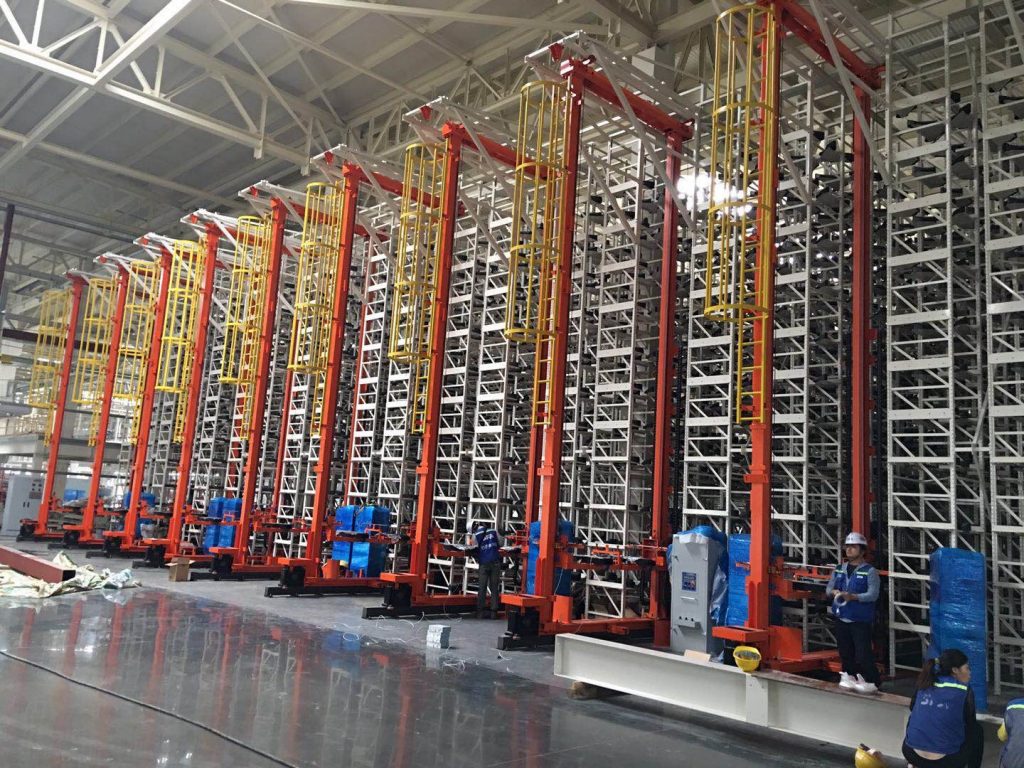
ASRS is a high-density storage system that can store goods (often on pallets) and retrieve them automatically. This is done by automated retrieval robots combined with specialized management software.
This is one of the most modern racking systems available today. Although expensive, it is typically used by large companies, such as tech firms or e-commerce businesses. These companies often develop their own management software systems tailored to their specific needs.
Selective Racking
Selective racking is a warehouse racking system suitable for storing heavy goods or pallets. It allows direct access to all pallets or goods without needing to move other items.
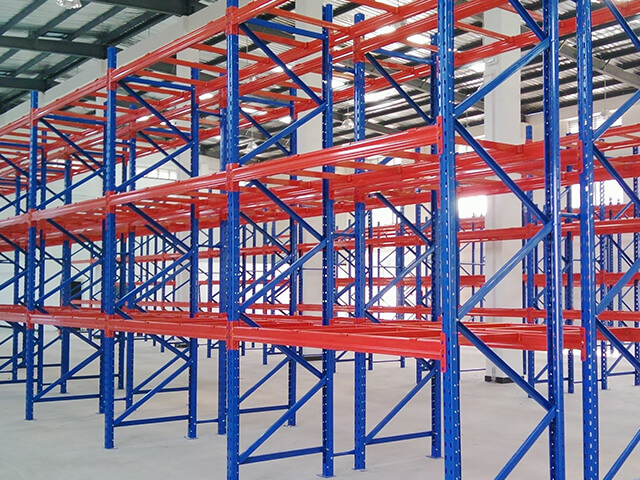
The key features of this racking system include its simple structure, load capacity of up to 2000 kg per shelf, and low cost. It is easy to install and can be used in many warehouses with various types of goods.
This is the perfect solution for warehouses requiring continuous loading and unloading of goods. It allows access from multiple sides and is affordable for companies of any size.
Double Deep Racking
Double deep racking is a heavy-duty racking system designed to increase storage efficiency and pallet density. It consists of two rows of selective racking installed back-to-back.
Double deep racking is similar in design to selective racking, but pallets are stored in two rows instead of one. Therefore, when investing in this type of racking, you should seek technical advice to select suitable specialized forklifts that can move goods deep into the racks and navigate narrow aisles.
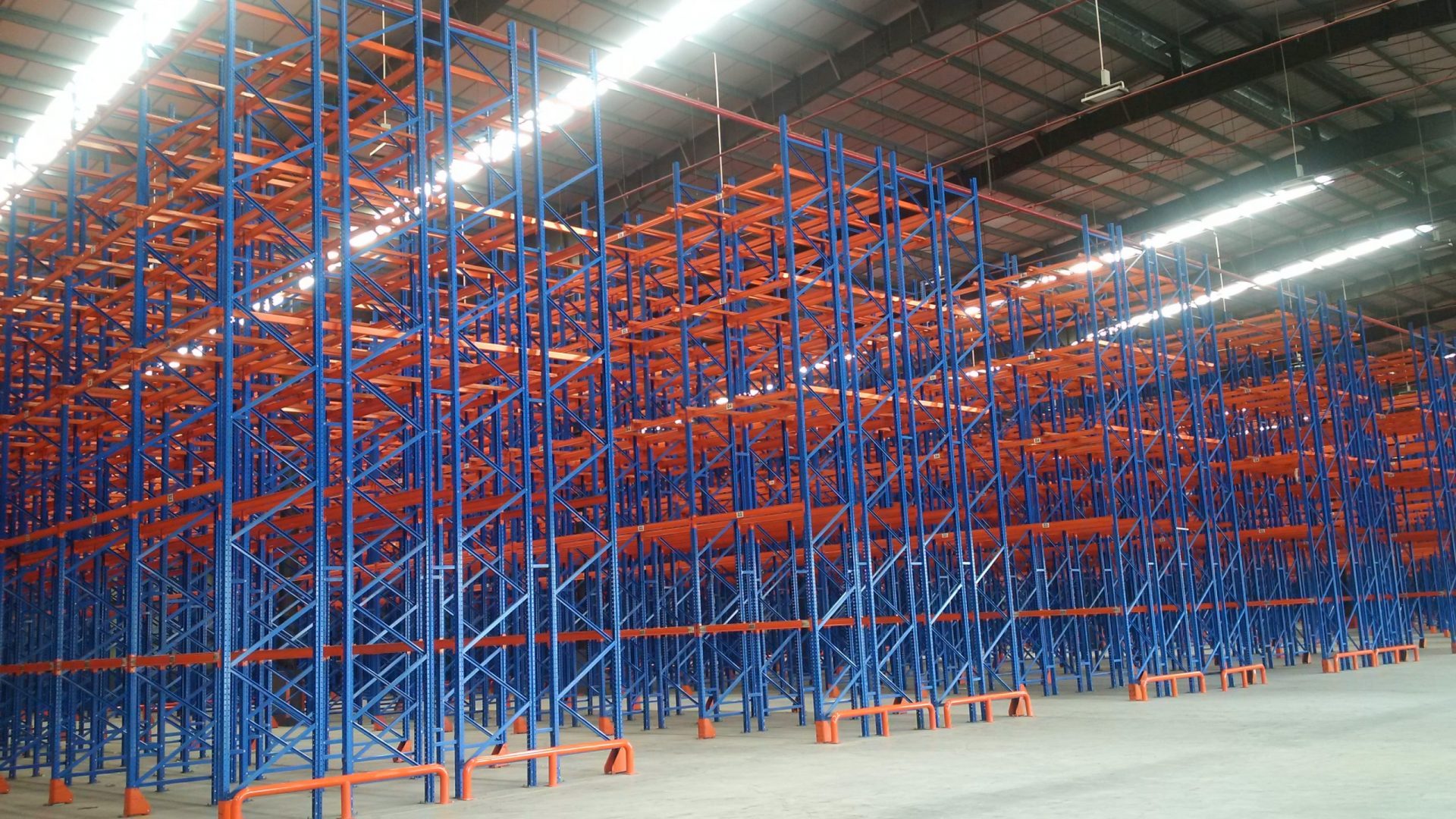
The racking system is assembled with bolts, with two rows of selective racking placed back-to-back. The average length is between 1150mm and 4000mm, maximizing aisle space.
The maximum height of the racking system can reach up to 10m, with the number of compartments and levels designed to meet customer requirements. The depth typically ranges from 1200mm to 4500mm, accommodating 2 to 4 pallets per row. This structure allows for a large volume of goods to be stored.
As a result, double deep racking is a popular choice for warehouses, especially those with high-density goods.
Drive-In Racking
Drive-in racking is a high-density industrial storage system that operates on a LIFO (Last In, First Out) basis, where goods are stored and retrieved from one end, with the last items stored being the first to be retrieved. The system features rails that guide pallets into the racks, with stop pallets attached to the structure.
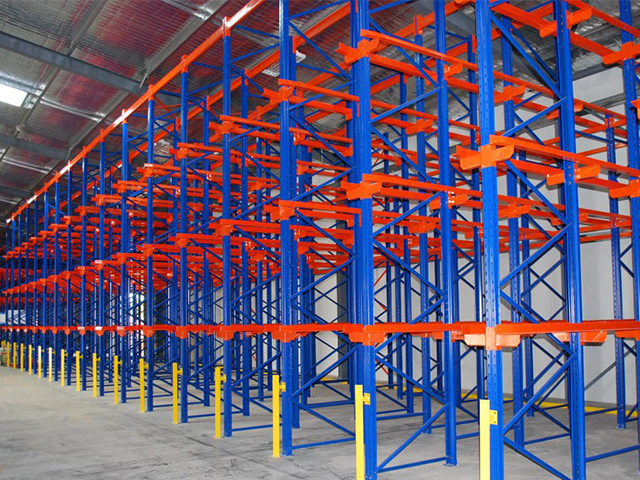
Drive-in racking is commonly used in large-scale production warehouses, suitable for storing and preserving large volumes of goods.
This racking system allows forklifts to operate, loading and unloading goods from the pallets easily. With the “Last-In, First-Out” principle, goods are only retrieved from one side of the rack, with the last item stored being the first to be retrieved. Based on this principle, warehouse managers can organize goods to suit the warehouse’s operational needs.
Mobile Racking
Mobile racking is a type of warehouse racking that can move back and forth on tracks installed on the floor, thanks to its connection with mobile structures. The rack structure consists of pallets placed close together, and the movement is entirely controlled by an electric motor.
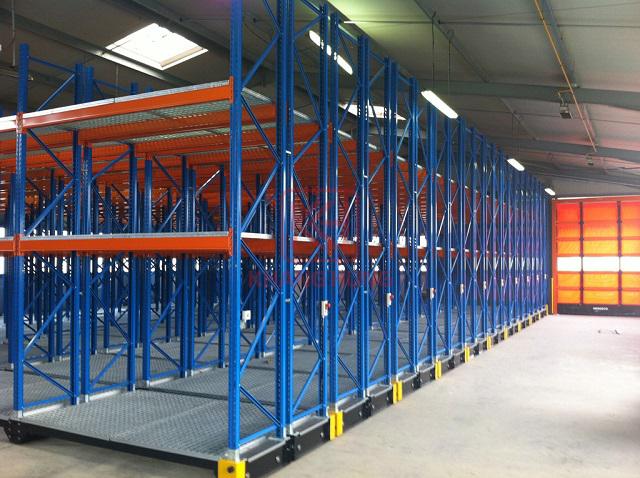
The most outstanding feature of this heavy-duty racking system is that the manager can move individual racks or entire rows. With the press of a button, you can access any pallet within the system without any obstacles. This unique feature sets mobile racking apart from other warehouse racking systems.
So, what types of warehouses is this mobile racking suitable for? It is specifically designed for cold storage warehouses or warehouses that do not require excessive aisle space.
Mezzanine Racking
Mezzanine racking, also known as mezzanine flooring, is a storage system designed to create additional floors within a warehouse, doubling or tripling storage space without expanding the warehouse’s footprint.
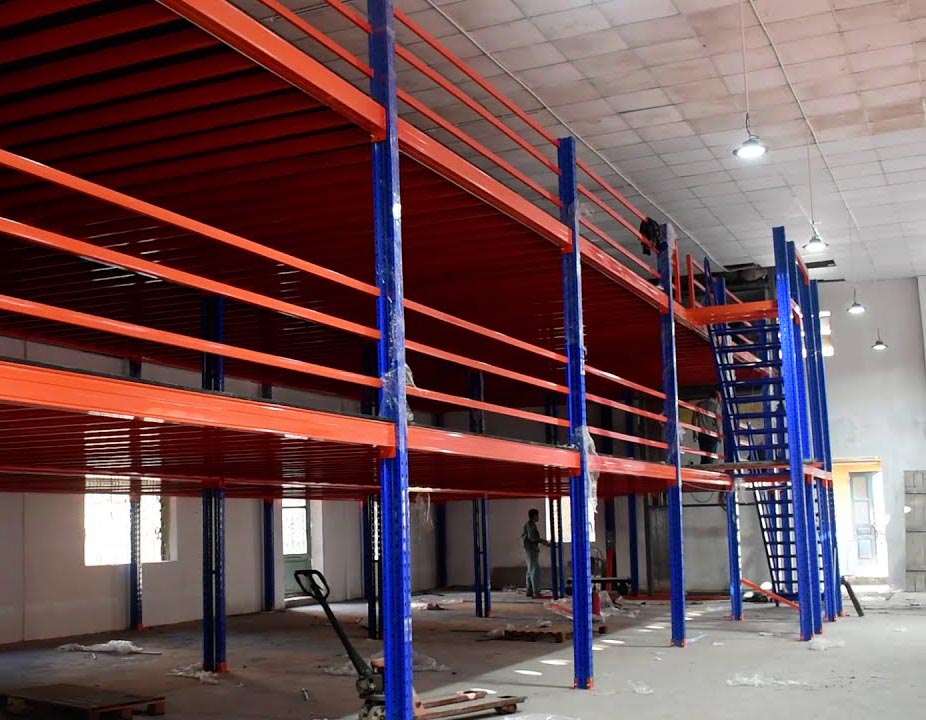
The mezzanine system is constructed from sturdy steel frames that meet safety standards. The floor surface is typically made from wood, steel, mesh, corrugated iron, or concrete, providing additional storage space or creating extra space for offices, production areas, or even retail spaces.
This racking system enhances storage efficiency and offers high economic benefits for businesses, reducing warehouse construction costs and maximizing the use of floor space.
Push Back Racking
Push-back racking is a heavy-duty warehouse racking system designed to optimize warehouse space. Unlike other racking systems, push-back racking uses an automatic pallet movement mechanism based on push force and a sliding rail system, increasing storage capacity by 2 to 3 times within the same area.
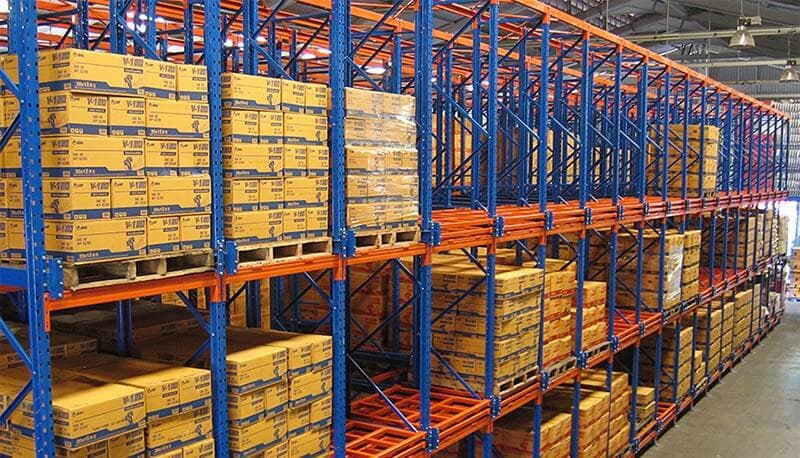
Each pallet can automatically be pushed back when a new pallet is placed in front. This unique operational principle has made push-back racking a smart and cost-effective storage solution for businesses today.
Push-back racking has a load capacity of 500kg to 1500kg per pallet, with each rack capable of storing 2 to 5 pallets. This racking system works well with pallets of the same size within a storage bay.
Flow Racking (Gravity Racking)
Flow racking, also known as gravity racking, is a type of warehouse racking system designed to store large quantities of goods. The system uses an automated mechanism based on gravity. It consists of inclined rails, rollers, and a sturdy frame, allowing goods to move easily and efficiently for loading and unloading.
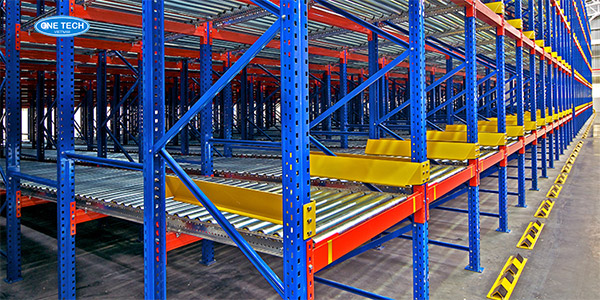
With its roller structure, goods can be smoothly transferred from one end to the other, facilitating the loading and unloading process. The rollers come in various designs, such as metal, steel (stainless steel), or plastic, depending on the specific needs of each industry and installation requirements.
4. Benefits of Using Warehouse Racking Systems
Space-Saving: Maximize vertical space, enabling more goods to be stored in the same area.
Cost Reduction: Minimize the time spent locating and moving goods, increasing employee efficiency.
Safety Assurance: Organize goods systematically, reducing the risk of accidents in the warehouse.
Scalability: Racking systems can be expanded as storage needs grow, offering flexibility in warehouse management.
5. Practical Applications of Warehouse Racking Systems
Warehouse racking systems are widely used across various industries, including:
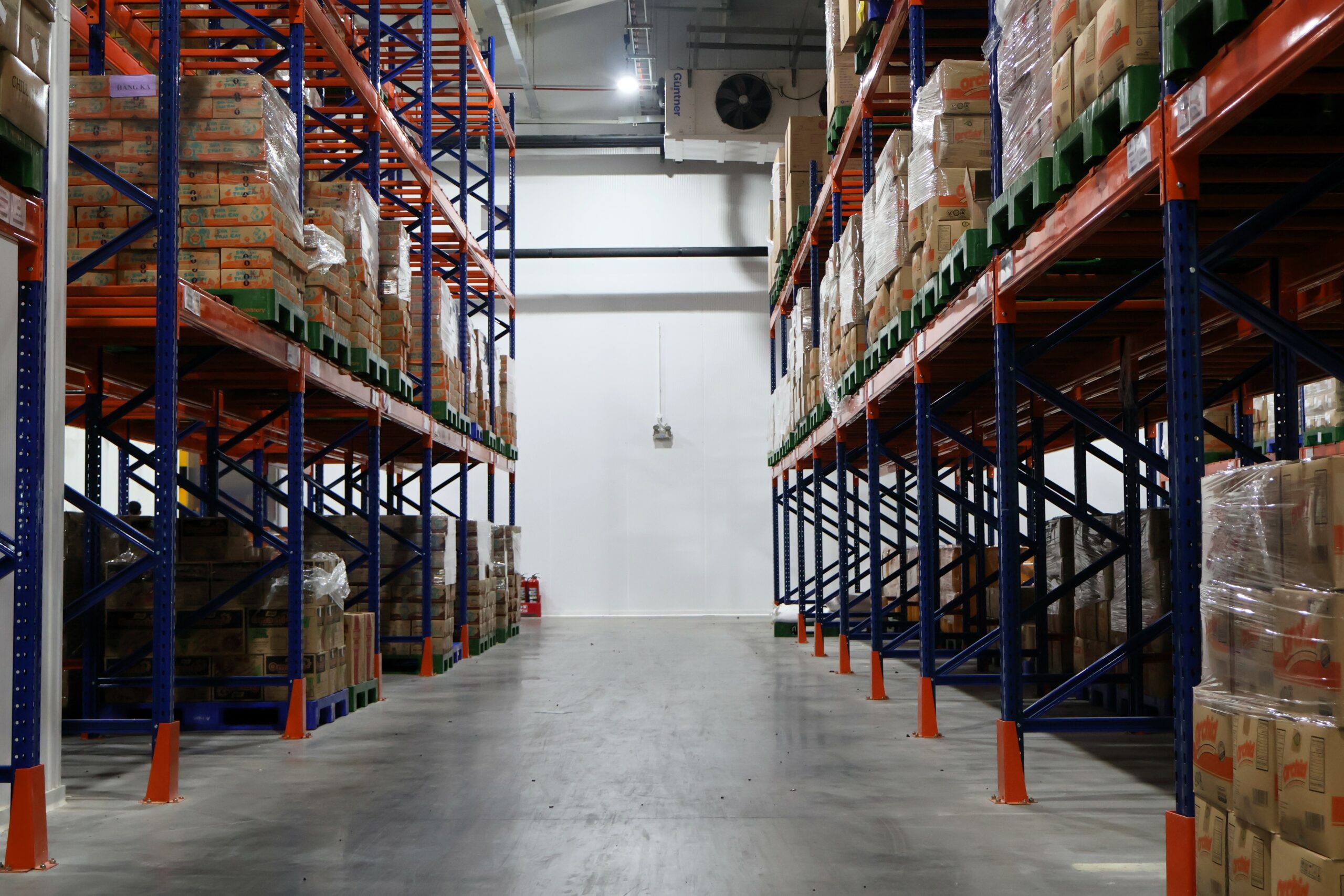
Manufacturing: Storing raw materials, semi-finished products, and finished goods in an organized manner.
Logistics: Optimizing storage space in distribution centers, making inventory management and distribution more efficient.
Retail: Enhancing product display and storage capabilities in retail warehouses.
Construction: Safely and conveniently storing building materials like steel, wood, and construction equipment.
6. Conclusion
Warehouse racking systems are essential for effective inventory management. Choosing and using the right racking system will help businesses optimize space, reduce costs, and improve productivity.
If you’re looking for high-quality warehouse racking solutions tailored to your business needs, contact Artem D&C today for expert advice!
